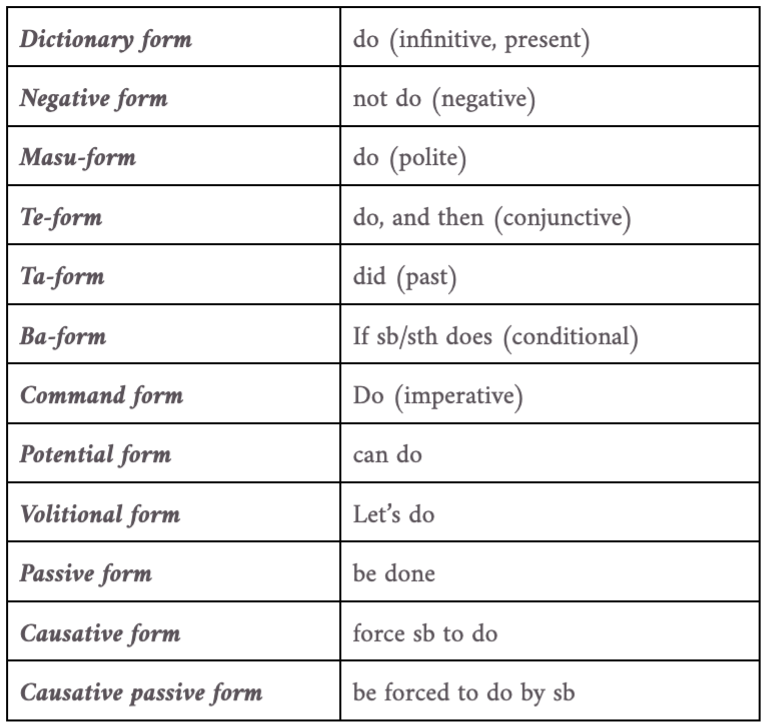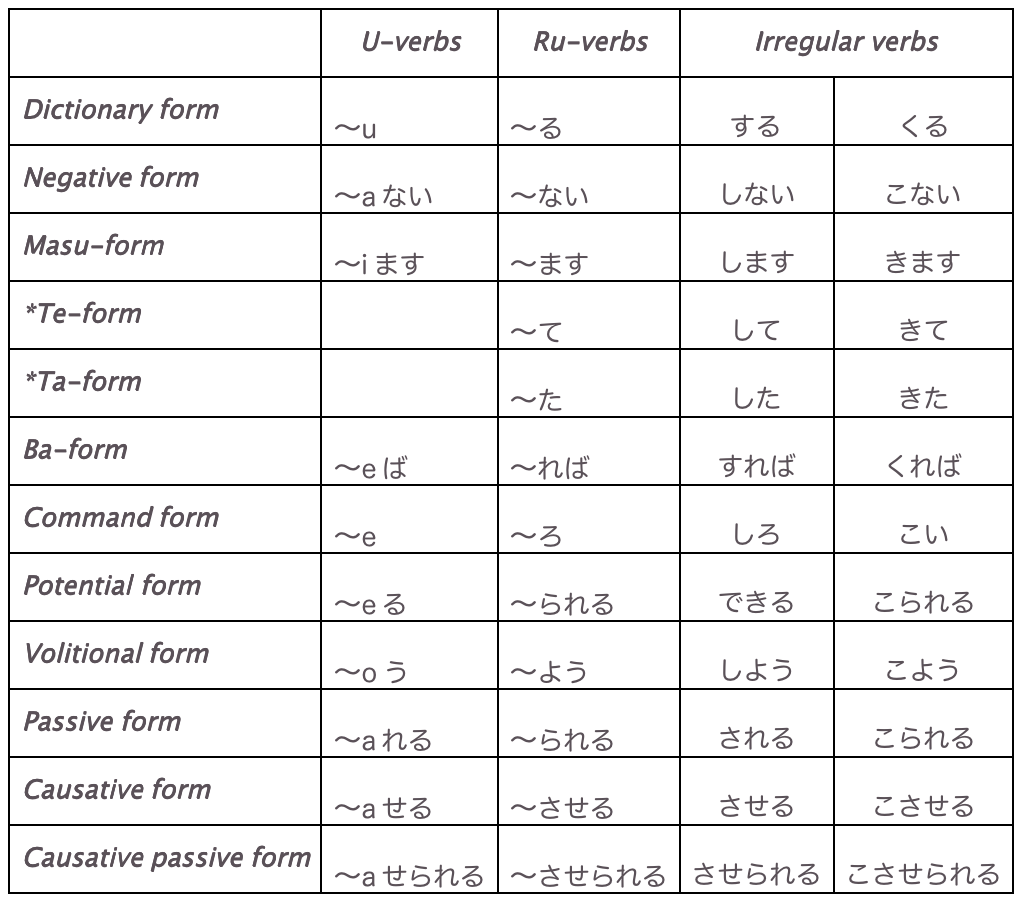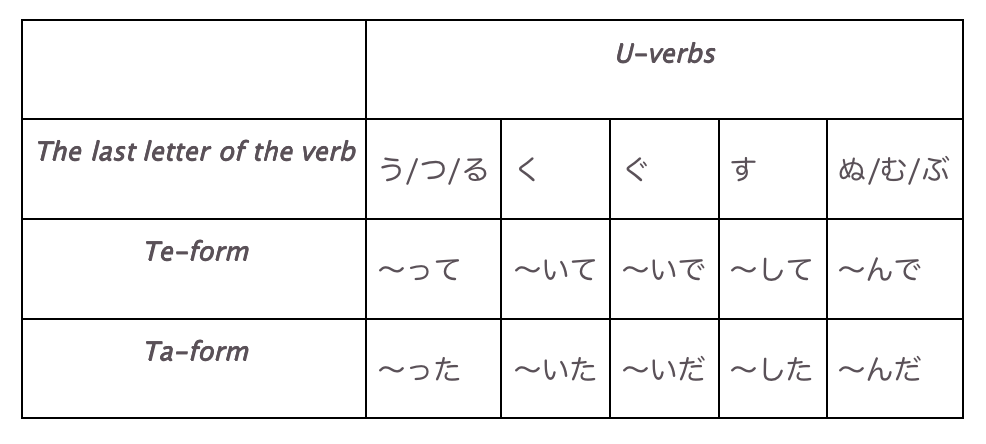What is verb conjugation? For example, in English, we add “-ed” to an infinitive to indicate the past tense.
The verb conjugation is a rule that verbs change depending on usage. Similarly, in Japanese, tense and modality are expressed by verb suffixes. In order to use grammatically correct Japanese, it is essential to master verb conjugation. This may sound like a high hurdle to overcome, but in principle, all you have to do is to classify verbs into three categories and apply the conjugation rules for each. In this article, I would like to explain the basic classification of verbs and the meaning of each conjugated form. Please bookmark this article and use it for your study.
3 types of Japanese verbs - U-verbs / Ru-verbs / Irregular verbs
All Japanese infinitives end with a sound containing the vowel /u/ (う,く,す,つ,ぬ,む,る,ぐ,ぶ) and are classified into two groups according to pronunciation: U-verb or Ru-verb. There is another group called Irregular verb, but since there are only two verbs included in Irregular verb: する (to do) and くる (to come), I will not explain them.

For example, the verb 歩(ある)く (walk) ends with く and is classified as a U-verb.
How about the verb 食(た)べる (eat)? It ends in る and can be classified as either a U-verb or a Ru-verb. In that case, Let's take a look at the letter just before the る. The letter べ is romanized as “be”, which contains the /e/ sound. If the letter immediately before る contains the vowel /i/ or /e/, it is a Ru-verb, so 食(た)べる (eat) is a Ru-verb.
*Note, however, that the following verbs do not follow the above trend, and are all classified as U-verbs, even if they end in /I/, /e/ + る.

12 forms of Japanese verb conjugation
Japanese verbs have 12 types of conjugations. The chart below shows the names of the conjugations and their main uses.

Japanese infinitives are called dictionary forms. This name comes from the fact that the infinitive is in the form in which it appears in the dictionary. The word 歩(ある)く (walk) is a dictionary form, which does not indicate tense. In order to use it as a past tense, you need to change it to Ta-form. In the next section, I will show you how to conjugate verbs.
Apply the conjugation rules to each group of verbs
The following chart shows the rules for conjugating each group of verbs in 12 different forms. Te-form and Ta-form of U-verbs are listed separately in the second chart because they have many entries.

* Te-form and Ta-form of U-verbs

Verbs have a common part called root that does not change in any conjugation form. In the chart above, it is represented by “〜“.
The root of Ru-verbs is the part of the infinitive before る. For example, in the case of 食(た)べる (eat), 食(た)べ is the root and る is the conjugation ending. If you want to use the negative form of 食(た)べる, the conjugation ending る changes to ない and you get 食(た)べない (don’t eat).
The root of U-verbs is the part up to the consonant of the final sound. For example, the word 歩(ある)く (walk) in romaji is “aruku”. The root is “aruk” and the final "u" is the conjugation ending. If you want to use the potential form of 歩(ある)く, the "u" is changed to "eる" and the word becomes 歩(ある)ける (can walk).
However, in Te-form and Ta-form, the last letter is the conjugation ending. For example, the last letter of the verb 歩(ある)く is く, which changes to いて or いた: Te-form for 歩(ある)く is 歩(ある)いて (walk, and then) and Ta-form for 歩(ある)いた (walked).
There are no rules for conjugating Irregular verbs, so you have to learn them by heart. Compound verbs ending in する and くる such as 勉強(べんきょう)する (study) and 連(つ)れてくる (bring sb) all have the same conjugation form. For example, the Ta-form of 勉強(べんきょう)する is 勉強(べんきょう)した (studied).
Verb conjugation in Japanese is one of the most common areas where learners stumble. This is because not all languages have similar rules. For example, Chinese does not have verb conjugation. However, Japanese verb conjugation is simple, and there are not many exceptions to the rule when it comes to regular words. You should be able to identify all the conjugations after reading two or three beginner to intermediate-level textbooks.







